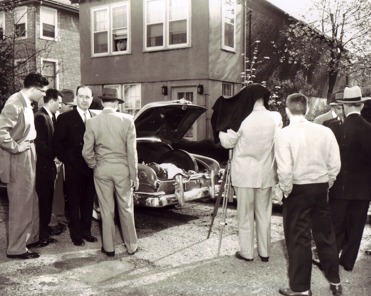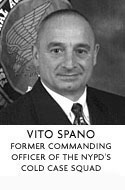
When I wrote my book about the NYPD’s Cold Case Squad I picked 4 cases to write about. It was a nightmare keeping them all straight. In any one case there are just endless facts, tests, people, answers, places, and calls, etc. to keep track of, and the mob case, forget about it. For each case I had to make timelines, and charts of who’s who, what they had done, and maps of all the movements of the suspects, and then in order to have a sense of what happened I had to keep them all in front of me either spread out on my desk or tacked up on the wall. And that was only 4 cases. A detective carries 12 or 20 or more. I don’t know how they do it.
At the same time I was studying unsolved murder in New York overall and looking at the past 100 years, although focusing on 1985 forward because that’s what the NYPD had so far input into their database. I was constantly looking for patterns. At the time, the software was severely limited, this was 2001 – 2003. Only the most basic searches were allowed, and everytime I asked, “Can you pull out …” the answer was no. I’m sure part of that was that they just didn’t want to provide certain information to me, but I was willing to accept that the programmers had not made the more sophisticated searches available to them. I tried to explain what good programmers could do for them, but that meant $$$. I ended up doing everything manually which took months and months and months. And of course the whole time I kept thinking how a few good programmers could make the detectives lives a lot easier.
I bring this up because Eric Ingersoll from Ingersoll Consulting emailed me about their Cold Case Toolkit product. I know I’m stating the obvious, but it’s very VERY hard to pull out patterns and connections manually. They could be right there in front of you and you can miss them. You forget stuff. It’s so easy to see how things fall through the cracks, because it’s simply not humanly possible to keep track of so much data in your head, and then perform the necessary operations on that data in order to make all the connections you need to make.
I haven’t actually seen their product in action, but it’s worth looking at. Developing these things from scratch is do-able of course, but more expensive.
Things about the Cold Case Analytical Toolkit that stood out for me:
“Data Sharing, Timeline, Attach Pictures, Mug Shots, Documents, Search Multitudes of Documents and Information Repositories, Restrict or Grant Access to Case File Information … a pretty wide and powerful array of search options.”
And, because you can’t find patterns if you don’t have access to all the available data, I liked this one:
“CCAT may be used for regional data sharing allowing one more agencies to access information. Information security restrices access to select areas where individuals or groups are granted permission.”
“CCAT may be used for special Task Forces where temporary data sharing is needed.”
“CCAT has the ability to search not only documents but also databases. For example if your agency has a records management system, CCAT can search selected areas of the database that may apply to your investigation. Multiple databases may be selected and searched simultaneously as well in a data sharing scenario. ”
Again, I haven’t seen the product, but I’d say it’s worth checking out. Especially if your department doesn’t have the budget to develop something like this itself. (That’s an old NYPD crime scene photo, undated.)












0 responses so far ↓
There are no comments yet...Kick things off by filling out the form below.
Leave a Comment